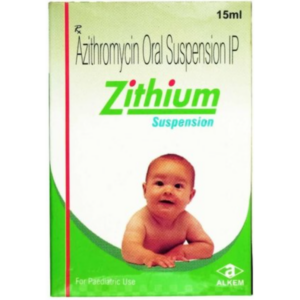AZITHROMYCIN + OFLOXACIN
Azithromycin: Azithromycin is an antibiotic medication that belongs to the class of drugs called macrolides. It is commonly prescribed for the treatment of various bacterial infections, including respiratory tract infections, skin and soft tissue infections, and sexually transmitted diseases.
The mechanism of action of Azithromycin involves interfering with the synthesis of proteins necessary for the growth and replication of bacteria. It does this by binding to the 50S subunit of the bacterial ribosome, which prevents the addition of new amino acids to the growing peptide chain.
The dose of Azithromycin can vary depending on the specific condition being treated. For most infections, a typical adult dose is 500mg once a day for 3 days. However, the exact dosage and duration of treatment should be determined by a healthcare professional based on the individual’s condition and medical history.
Common side effects of Azithromycin include gastrointestinal symptoms such as nausea, vomiting, diarrhea, and abdominal pain. These side effects are usually mild and temporary. Less common but more serious side effects may include allergic reactions, liver problems, and changes in heart rhythm. It is important to seek medical attention if any severe side effects are experienced.
As with any medication, it is important to follow the prescribed dose and duration of treatment. Azithromycin should not be used for viral infections such as the common cold or flu, as it is only effective against bacteria. Additionally, it is important to inform the healthcare provider about any other medications or medical conditions before starting Azithromycin, as it may interact with certain drugs or worsen certain conditions.
Ofloxacin: Ofloxacin is a fluoroquinolone antibiotic used to treat various bacterial infections. It works by inhibiting the bacterial DNA gyrase enzyme, preventing DNA replication and ultimately killing the bacteria.
This drug is commonly prescribed for respiratory tract infections, urinary tract infections, skin and soft tissue infections, and sexually transmitted infections such as gonorrhea. It is also effective in preventing and treating certain types of anthrax infections.
The usual recommended dosage of ofloxacin varies depending on the type of infection being treated. For most infections, a typical adult dose is 200-400 mg taken orally every 12 or 24 hours. The duration of treatment generally ranges from 7 to 10 days, but it may be longer in certain cases.
Ofloxacin can cause some common side effects such as nausea, vomiting, diarrhea, abdominal pain, headache, and dizziness. These side effects are usually mild and go away on their own. However, if they persist or worsen, it is important to consult a healthcare professional.
In some cases, more serious side effects may occur, although they are rare. These can include tendon rupture, especially in the elderly or those on corticosteroid therapy, severe allergic reactions, liver damage, blood disorders, and central nervous system effects such as confusion or hallucinations. If any severe side effects are experienced, immediate medical attention should be sought.
It is important to note that ofloxacin should not be used in children, adolescents under 18 years of age, and pregnant or breastfeeding women, unless specifically prescribed by a healthcare professional. Additionally, it is essential to complete the full course of treatment as prescribed, even if symptoms improve before the medication is finished, to prevent the development of antibiotic resistance.


